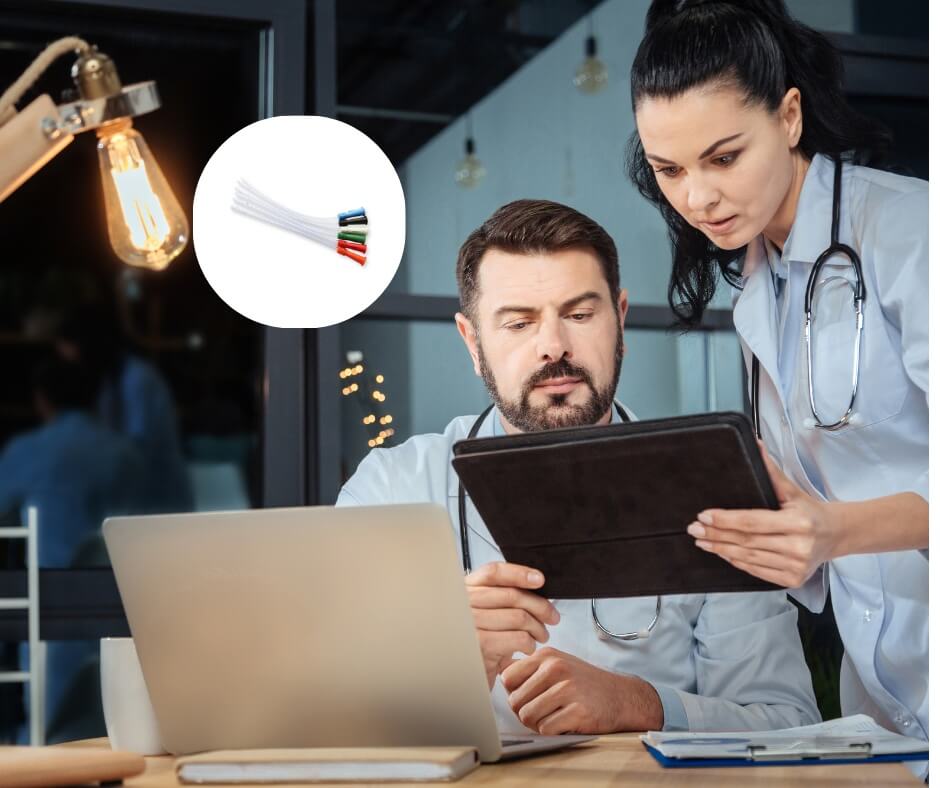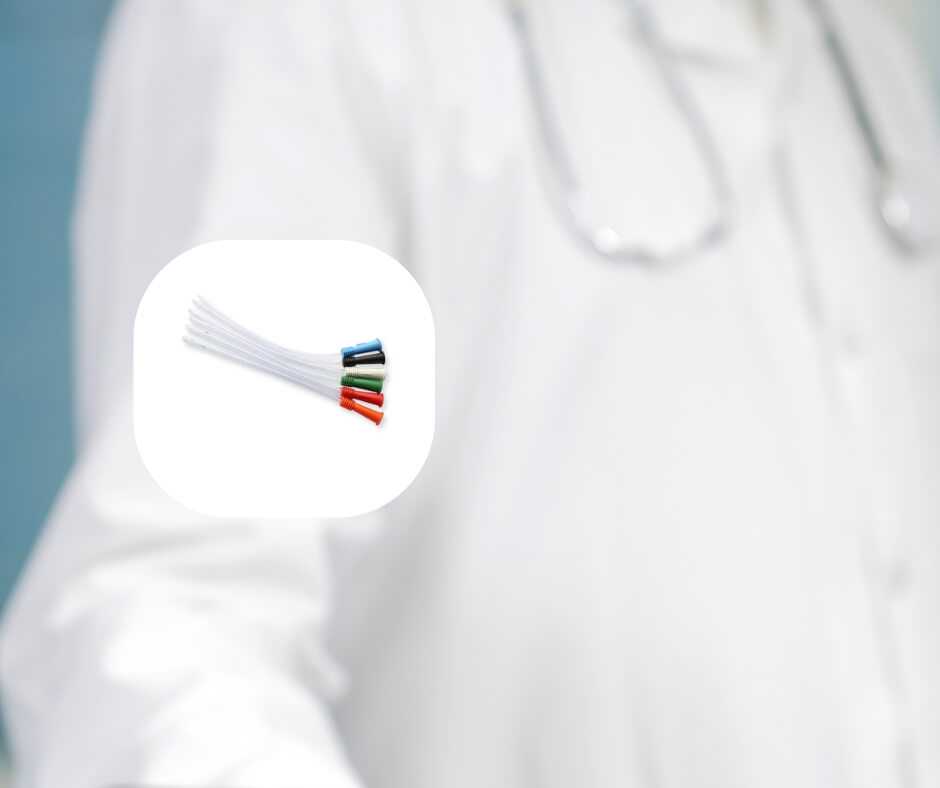For patients who use catheters, day-to-day life can bring up some common concerns: Will I smell? Will my clothes get stained? How can I keep my catheter discreet at home, while traveling, or at work? This guide answers all those questions with practical tips and introduces reliable intermittent catheter brands like Bever Medical, ensuring you can face life with confidence and comfort. Do Catheters Cause Odor? How to Avoid It? Is there an odor? Under normal circumstances, using a catheter shouldn't result in a noticeable odor. However, improper use or insufficient hygiene might lead to issues like urine residue and unpleasant smells. Here are some possible causes: Residual urine: Incomplete drainage or leftover urine in the catheter. Infection: A urinary tract infection (UTI) can cause urine to have an unusual smell. Catheter material: Lower-quality catheters might absorb odors, which isn't ideal. How to prevent odor? Choose a high-quality catheter: Opt for trusted brands of intermittent catheters like Bever Medical, which use advanced materials and designs to minimize residue and odor absorption. Maintain hygiene: After each use, ensure that urine is completely drained and the catheter is cleaned. Use odor-neutralizing products: Specialized sprays or odor-absorbing pads can provide extra peace of mind. Replace your catheter regularly: Follow your doctor's recommendations for replacement to prevent odor buildup over time. Do Catheters Make Clothes More Likely to Stain? 1. The potential issues It's natural to worry about urine leakage staining your clothes, especially if you're wearing a catheter for extended periods. Common causes include: Improperly sealed connections: Leaks can occur if the catheter isn't secured correctly. Mishandled urine bags: Overfilled or incorrectly positioned urine bags are another culprit. 2. How to prevent stains Go for leak-proof designs: Bever Medical’s intermittent catheters are built with reliable anti-leak features to reduce leakage risks. Secure your urine bag properly: Strap the bag securely to your thigh or calf to prevent it from tipping. Carry a change of clothes: Keep a spare outfit handy when you're out, just in case. How to Hide Catheters at Home? Even at home, many patients prefer to keep their catheter discreet while staying comfortable. 1. Wear loose-fitting clothing Opt for loose pants or long skirts to conceal both the catheter and urine bag effectively. Dark-colored fabrics work wonders for minimizing visible outlines. Choose elastic waistbands to avoid pressure on the catheter and improve comfort. 2. Position your catheter and bag strategically Secure the catheter: Use medical tape to gently fix the catheter along the inner thigh, reducing movement and visibility. Hide the urine bag: Use a small urine bag strapped to your thigh or calf, and cover it with loose clothing. 3. Create a home setup that works Dedicated storage space: Keep your catheter supplies in a designated area, hidden from view but easily accessible. Have cleaning supplies ready: Make sure disinfectant wipes, disposal bags, and other hygiene essentials are within reach. How to Hide Catheters While Traveling? Traveling with a catheter doesn't need to be stressful. These tips will help you stay comfortable and discreet: 1. Choose the right clothing and accessories Hidden-pocket underwear: Specialty underwear with built-in pockets can securely hold a small urine bag. Long coats or loose trousers: These are ideal for hiding the bag and catheter tubing while moving around. 2. Opt for travel-friendly catheter gear Small urine bags: Use compact urine bags that are easy to conceal and handle. Portable catheters: lightweight and easy-to-use intermittent catheters are a great option for travelers. 3. Pack a catheter care kit Prepare a small travel bag with: Spare catheters Disposable gloves Disinfectant wipes Sealable trash bags for used catheters How to Hide Catheters at Work? Maintaining a professional image at work while managing a catheter can be challenging, but it's doable with the right strategies. 1. Manage your catheter discreetly Secure the catheter: Tape the catheter along your leg to avoid it shifting or becoming visible when you move. Strategic bag placement: Keep the urine bag on your calf or thigh and cover it with loose-fitting pants. 2. Adapt to your work environment Schedule bathroom breaks: Plan your catheter routine around your work schedule to reduce the risk of interruptions. Choose the right chair: A cushioned or breathable chair can make sitting for long periods more comfortable while using a catheter. Final Thoughts Using a catheter doesn't have to limit your lifestyle. With proper management and smart planning, you can hide your catheter and navigate home life, travel, and work with confidence. Whether you need daily care tips or discreet solutions for specific scenarios, Bever Medical's intermittent catheters are a dependable choice.
View More +-
01 Feb 2025
These situations like improper catheter material, bacterial infections, or frequent use can increase the risk of urethritis for catheter users. This article shares everything you need to know about urethritis, including its common symptoms and prevention methods. What Is Urethritis? Urethritis is an inflammation of the urethra, often caused by bacteria, viruses, or other pathogens. The urinary is a vital part of the urinary system, and a catheter is placed there. Sometimes, inserting intermittent catheters can lead to urethritis, which can cause discomfort, pain, and other urinary symptoms. Common Types of Urethritis Bacterial Urethritis Non-Bacterial Urethritis Mechanical Urethritis Allergic Urethritis Why Do Catheters Cause Urethritis? 1. Bacterial Infections The insertion of a catheter may introduce external bacteria into the urethra, especially if sterile techniques are not followed. And bacteria can travel along the catheter, increasing the risk of infection. 2. Material and Type of Catheter Some patients are allergic to some catheter materials, leading to urethral inflammation. If unsuitable Catheters, also can cause friction and damage, raising the risk of infection. 3. Insertion Technique Wrong insertion can damage the urethral lining, leading to inflammation and infection. 4. Hygiene Conditions Using catheters in unsanitary environments or without proper sterilization increases the likelihood of bacterial infections, so does personal hygiene. 5. Duration of Use Long-term or frequent catheter use can cause ongoing irritation and micro-damage to the urethra, making it more susceptible to infection. Common Symptoms of Urethritis Caused by Catheters Urethritis can lead to severe discomfort and, if left untreated, may result in complications such as kidney damage. Recognizing its symptoms early is crucial: Frequent Urination: When you often feel urinate, even with little output. Urgency: You want to urinate suddenly and uncontrollably. Pain During Urination: Burning, stinging, or sharp pain while urinating. Urethral Discharge: Mucus, pus, blood, or foul-smelling discharge from the urethra. Redness and Swelling: The urethral opening may appear inflamed or irritated. Lower Abdominal Discomfort: Mild pain or discomfort in the lower abdomen. Burning Sensation: A burning feeling as urine passes through the urethra. Discolored Urine: Urine may appear cloudy, concentrated, or mixed with blood or pus. Reduced Urine Output: Difficulty urinating or producing less urine than normal. Fever: It may mean the infection has spread to the bladder or kidneys. Prevention Tips for Catheter-Associated Urethritis female straight catheter Choose the Right Type of Catheter For conditions like prostate enlargement or urethral curvature, a Coude catheter is recommended due to its curved tip that navigates narrow areas more easily. Hydrophilic-coated catheters are another option to reduce friction and minimize urethral trauma, lowering the chances of inflammation. Practice Proper Insertion Techniques Maintain sterility: Always wash your hands and disinfect the insertion area before use. Avoid forceful insertion: Insert the catheter gently and stop if resistance is encountered. Secure the catheter properly after insertion to prevent unnecessary movement that may damage the urethra. Limit Catheter Usage Avoid frequent or prolonged use of catheters unless absolutely necessary. Follow your doctor's guidance to minimize overuse. Use the Right Lubricant Use sterile, water-based lubricants to minimize friction and prevent mechanical injury. Avoid oil-based lubricants, as they can irritate the urethra. Select the Correct Size The catheter's size significantly impacts safety and comfort. Oversized catheters may cause friction and trauma, while undersized ones may lead to leakage or inefficient drainage. Consult your doctor to determine the best size for you. Replace Catheters Regularly Prolonged use of the same catheter can harbor bacteria, increasing the risk of infection. Follow your doctor's recommended schedule for replacements. Maintain Good Personal Hygiene Clean the skin around the catheter insertion site daily to prevent bacterial growth. Seek Medical Help Promptly If you experience discomfort, frequent urgency, pain, or difficulty urinating, consult a doctor immediately. They can assess whether a different catheter type or adjustment in usage is needed. Conclusion If you feel discomfort from urethral, frequent urination, pain when urinating, or difficulty urinating, it's wise to contact your doctor immediately. Your doctor can give suggestions according to your situation. Maybe you need to change the type of catheter or adjust the method of use. If you plan to shop for the tool online, you'd better have your doctor's permission. Bever Medical provides medical-grade catheters and professional guidance. To know whether your medical insurance can cover it, welcome to contact us without hesitation.
View More + -
03 Feb 2025
As parents age, they may face physical health challenges such as urinary incontinence. It can be hard to talk about it with their children. So, how do adults discover it happened to their parents? This guide provides practical tips on identifying incontinence signs and some measures. Parents May Hidden Incontinence Signs Many elderly people may choose to hide their urinary incontinence out of embarrassment or fear of judgment. For health considerations, we can identify potential issues by observing their behavior and physical signs. 1. Behavioral If you find your parents go to the bathroom more often than usual or frequently wake up at night to urinate, this could be a sign of incontinence. And they may cut time for social gatherings or outings. Finally, they may be withdrawal or irritability. 2. Pay Attention to Clothing and Odors Your parents may change clothes or bed linens frequently, and you can smell persistent urine odor in their living space. Additionally, they use air fresheners excessively. 3. Cover-Up TacticsExcuses Parents might blame frequent urination or wetness on “drinking too much water” or “the cold weather.” Seeking Professional Help: The First Step Once you've identified potential signs of incontinence, the next step is to help your parents consult a healthcare professional. 1. Choose the Right Specialist A urologist can conduct thorough evaluations to identify the underlying causes of incontinence, which may include: Weak bladder control Prostate enlargement (in men) Pelvic floor muscle weakness (in women) Urinary tract infections or other conditions After a detailed medical history, physical exam, and additional tests (like urine analysis or bladder function tests), the doctor can create a personalized treatment plan. 2. Support Your Parents Your support can make the process less daunting. Reassure your parents that seeing a doctor is about improving their comfort and quality of life, not about judgment. If your parents agree to go to the hospital, you can list symptoms and observations in advance, making the consultation more effective. Choosing an Effective and Easy-to-Use Catheter For parents who need help emptying their bladder, intermittent catheters are a safe and practical option. They can prevent infections caused by urine retention and improve daily comfort. 1. Selecting the Right Catheter When choosing a catheter for your parents, consider the following factors: Material: Silicone catheters are soft and durable, making them suitable for long-term use, while PVC catheters are budget-friendly and ideal for short-term needs. Length: Men generally require longer catheters (about 40 cm), while women need shorter ones (around 20 cm). Lubrication: Pre-lubricated catheters are easier to use and perfect for parents who can self-administer, while non-lubricated ones require additional gel, better for assisted usage. 2. Setting Up a Catheterization Kit in the Bathroom Make the process easier by preparing a simple catheterization kit at home: Intermittent catheter (in the appropriate size and material) Disposable gloves Hand sanitizer or disinfectant wipes Storage box for unused catheters Waste disposal bags Pro Tip: Bever Medical offers a wide range of high-quality catheter products to meet diverse needs. Helping Parents Adjust to a Healthier Lifestyle Generally, urinary incontinence is often connected to overall health. Changing lifestyle can improve symptoms significantly. 1. Diet Changes Avoid Bladder Irritants: Limit caffeine, alcohol, and spicy foods, as they can worsen urgency and frequency. Increase Fiber Intake: Prevent constipation, which can exacerbate incontinence, by adding whole grains, fruits, and vegetables to their diet. 2. Encourage Pelvic Floor Exercises Pelvic floor strengthening exercises, like Kegel exercises, can enhance bladder control. Teach your parents this simple routine: Locate the right muscles by mimicking the action of stopping urine midstream. Tighten the muscles for 5 seconds, then relax for 5 seconds. Repeat 3–4 sets daily. 3. Establish Good Habits Help parents develop good habits like regular restroom visits to avoid overfilling the bladder; reduce fluid consumption in the evening to minimize nighttime trips to the bathroom, etc. Offering Emotional Support: Kindness Makes a Difference Incontinence isn't just a physical issue—it can have a profound emotional impact on your parents. Here's how you can help: 1. Be Positive and Supportive Avoid criticism or embarrassment. Instead, use encouraging language like, “This is a common issue, and we’ll work through it together.” 2. Motivate Them to Seek Help Share success stories or reliable resources to reduce their fear of catheters or medical consultations. For example, let them know many patients have significantly improved their lives using Bever Medical's catheter products. 3. Offer Practical Assistance Help them discreetly purchase incontinence supplies. Create a private, comfortable space for catheter use at home. Build a support network by connecting them with professional caregivers or local health programs. Final Thoughts Urinary incontinence shouldn't influence your parents' lives. With the right medical care, high-quality intermittent catheters, and a healthy lifestyle, they can live as normal people. Bever Medical provides elder people with premium intermittent catheters and catheterization kits as well as expert guidance to help patients tackle incontinence challenges with ease. Whether you need help selecting the right product or learning how to use it, Bever Medical is a trusted partner in your journey toward better health and confidence for your loved ones.
View More + -
04 Feb 2025
Although you have learned to use the catheter with the help of your doctor and nurse, it is normal to feel discomfort when using it at the beginning. You may not use it correctly, which may cause friction and discomfort. As a result, you will be afraid of the next use, which means it will affect your normal life. If you feel pain when re-inserting it, you should contact your doctor in time, because the pain may be caused by other factors. This article will share the reasons for pain during insertion and how to relieve it. Common causes of pain during catheterization Many reasons can cause pain during catheterization, and getting to know them can help you ease the pain. Not considering the function of the catheter The design and function of the catheter have a direct impact on the comfort of catheterization. Using an inappropriate catheter may cause pain. Common reasons include: Inappropriate tip design The tip design of some catheters is not user-friendly and may cause irritation and discomfort when passing through the urethra. For example, the sharp edge may scratch the urethral wall, causing pain and bleeding. Too large or too small diameter The wrong diameter of the catheter can lead to excessive pressure or friction. For example, a large-size catheter will increase pressure in the urethra, while a catheter that is too small may cause a backflow of dirt. Don't choose the right material The material of the catheter can also affect comfort. Some materials may cause allergic reactions or irritation, increasing patient discomfort. Urinary tract infection or other diseases Urinary tract infection (UTI) is one of the common complications of catheterization, which may cause patients to feel significant pain and discomfort during catheterization. Other related diseases may also cause pain, including: Urethritis: Inflammation of the urethra may cause pain, especially when the catheter is inserted. Cystitis: Infection or inflammation of the bladder can also cause pain, especially when the bladder is full. Prostate problems: Male patients may feel pain during catheterization due to prostate hyperplasia or inflammation. Psychological factors Many people feel nervous and afraid when they catheterize for the first time. This emotion may cause muscle tightness, which may increase the pain during catheterization. Uncertainty about the catheterization process and the expectation of pain may make patients feel more uneasy. Other factors In addition, the lubricant used during catheterization, the hygiene of the catheterization environment, and the technique of operation may also affect the pain. Ensuring that catheterization is performed in the appropriate environment and using the right lubricant can help reduce discomfort. How to avoid pain? To minimize pain during catheterization, you can take the following steps: Use a comfortable catheter. Coudé Tip Catheter Some patients may find coudé tip catheters more comfortable than others. This is because the tip of this catheter is designed to pass more smoothly through the urethra, especially for patients who are bypassing any obstructions or strictures in the urethra. Your doctor will help you choose the right catheter for you based on your specific situation. Hydrophilic Catheters This catheter becomes smoother when it comes into contact with liquid, which can reduce friction and discomfort during catheterization. Hydrophilic catheters are pre-lubricated and designed for patients who have difficulty inserting them into the urethra. For both men and women, using hydrophilic catheters can reduce the risk of urinary tract infections (UTIs) and provide maximum comfort during insertion and removal. Polished Eye Catheters The eye of this catheter is specially polished to reduce irritation during catheterization. You can also use this if you feel discomfort with other catheters. Use lubricants on uncoated catheters Lubricants can significantly increase the comfort of catheterization, especially with uncoated catheters. The proper use of lubricants can reduce friction and discomfort. Psychological counseling Many patients may feel uncomfortable during the first attempt, please try to use the catheter later. Tips: Deep breaths can help relax your body and mind and relieve tension. Before catheterization, a hot water bottle to apply heat to help relax the muscles around the urethra. Finally, please keep a good attitude, it will make insertion smoother. How to choose the right catheter? Common catheter materials Silicone: Silicone catheters have good flexibility and durability and are suitable for long-term use. Its smooth surface can reduce friction and reduce discomfort. Polyvinyl chloride (PVC): PVC catheters are usually used for short-term catheterization and are relatively cheap, but may not be as soft as silicone catheters and may cause discomfort after long-term use. Hydrophilic coating: Some catheters use hydrophilic coatings, which can become smoother after contact with liquids, reduce friction during insertion, and improve comfort. Catheter design The design of the catheter plays an important role in the comfort and effectiveness of the catheterization process. You can refer to the several catheters mentioned above. Choosing a catheter that is more in line with the physiological structure can significantly reduce the discomfort during catheterization. Ease of use When choosing a catheter, you should also consider its ease of use: Disposable vs. reusable: Disposable catheters are easy to use and do not require sterilization, but the cost is relatively high; while reusable catheters require proper cleaning and sterilization procedures. Packaging and ease of use: Some catheters come with convenient packaging and instructions for use, making it easy for patients to operate at home. Precautions before and after catheterization Preparation and care before and after catheterization are important parts of reducing discomfort. Instruct patients on how to prepare and care to reduce discomfort Before catheterization: confirm that the required tools and materials are complete, ensure a clean environment, and use appropriate lubricants. After catheterization: pay attention to observe whether there are any abnormal symptoms, such as pain, bleeding, etc., and communicate with the doctor in time. Improving the inserting experience Knowing the reasons for pain during the insertion of a catheter and taking appropriate precautions can make the catheterization process smoother. In addition to the right catheter products, it is also important to master the correct insert tips. Bever Medical provides catheter products of different models and sizes. Besides, if you need professional support, we will help you cope with the challenges during the catheterization process. Any interests, please browse our website.
View More + -
06 Feb 2025
For individuals who require catheterization, choosing the right type of catheter is essential for comfort, ease of use, and overall health. Two of the most common types are straight catheters and Coudé catheters. While both serve the same fundamental purpose—draining urine from the bladder—their designs and applications differ significantly. If you're unsure which option suits you best, this guide will help clarify the differences and explain why Coudé catheters, offered by brands like BEVER Medical, can be a game-changer for certain users. Understanding Straight Catheters A straight catheter is the most commonly used type of intermittent catheter. It features a uniform, straight tip designed for easy insertion into the urethra. These catheters are typically made from materials like silicone, PVC, or latex and are available in various sizes to accommodate different anatomical needs. Who Should Use Straight Catheters? Straight catheters are ideal for: Individuals with no urethral obstructions Those who self-catheterize regularly and have no insertion difficulties Patients recovering from surgery with temporary catheterization needs People looking for a widely available and cost-effective option Since straight catheters follow the natural path of the urethra, they are relatively simple to use for those with an unobstructed urinary tract. And straight catheters are ideal for women because they have a shorter urethra, making insertion easier and more comfortable compared to men, who may require a Coudé catheter if they have anatomical obstructions.Many high-quality medical brands, including BEVER Medical, offer straight catheters in hydrophilic and pre-lubricated versions to enhance comfort. What Are Coudé Catheters? Unlike straight catheters, Coudé catheters have a slightly curved or angled tip, designed specifically for individuals with urinary obstructions or anatomical difficulties. The word Coudé (French for “elbow”) describes the gentle bend at the tip, which allows the catheter to navigate past narrow or restricted areas more easily. When Should You Use a Coudé Catheter? Coudé catheters are recommended for individuals who experience: Benign Prostatic Hyperplasia (BPH): An enlarged prostate can compress the urethra, making it difficult for a straight catheter to pass through. The curved tip of a Coudé catheter can bypass the obstruction smoothly. Urethral Strictures: Scarring or narrowing of the urethra can make insertion difficult with a straight catheter. The angled tip of a Coudé catheter helps navigate these tight areas with less discomfort. Neurogenic Bladder Conditions: Patients with spinal cord injuries or neurological disorders may benefit from the precise control a Coudé catheter offers. Post-Surgical Patients: After certain surgeries, swelling or scar tissue can make a straight catheter ineffective, making a Coudé catheter a more suitable option. Key Differences: Coudé vs. Straight Catheters To help you decide which catheter is right for you, let's compare both types: How to Use a Coudé Catheter Properly Using a Coudé catheter correctly is key to a smooth and painless experience. Here are some essential steps to follow: Wash Your Hands – Always begin with proper hand hygiene to reduce the risk of infections. Prepare the Catheter – If using a hydrophilic Coudé catheter, activate the coating with water to ensure smooth insertion. If using a non-hydrophilic version, apply a water-based lubricant. Position Yourself Comfortably – Lying down or standing with one foot elevated can help create an optimal insertion angle. Insert with the Curved Tip Facing Up – The angle must be aligned properly to navigate past obstructions like an enlarged prostate. Advance Slowly – If you meet resistance, do not force the catheter. Instead, adjust the angle slightly and continue gently. Drain the Bladder Completely – Once urine flow begins, allow full drainage before slowly removing the catheter. Dispose of the Catheter Properly – If using a single-use catheter, discard it according to local medical waste regulations. Brands like BEVER Medical offer ergonomic catheter packaging with easy-open features, making self-catheterization more convenient and hygienic. Final Thoughts: Which One Is Right for You? Choosing between a Coudé catheter and a straight catheter depends on your specific needs. If you experience difficulties inserting a straight catheter due to anatomical obstructions, a Coudé catheter—such as those provided by BEVER Medical—can significantly improve comfort and ease of use. On the other hand, if you have no obstructions and prefer a simple, widely available option, a straight catheter may be sufficient. Ultimately, consulting with a healthcare professional is the best way to determine which catheter is right for you. Your doctor can recommend the most appropriate type based on your condition and comfort level. Whether you require a Coudé catheter for medical necessity or a straight catheter for routine use, BEVER Medical offers high-quality solutions to support your health and well-being.
View More + -
18 Feb 2025
Postpartum urinary incontinence is exceptionally common among women in Western nations. 85% of female respondents experience bladder spillage according to Urology Times. Additionally, 15% of respondents said they had obtained resources and supplies from healthcare providers to manage their urinary incontinence. These patients regularly miss numerous exercises due to urinary incontinence. However, with the proper approach, women with postpartum incontinence can still socialize like typical individuals. In this article, you can learn the right ways to manage urinary incontinence. What Is Postpartum Urinary Incontinence? Postpartum urinary incontinence alludes to automatic pee spillage after childbirth, particularly amid physical exercises, wheezing, hacking, or snickering. Amid pregnancy and conveyance, the bladder and pelvic floor muscles persevere noteworthy weight and extend, debilitating their capacity to control pee. Stretch incontinence is especially common among unused mothers, affecting around 7 million ladies. Indeed those who experience C-sections may still encounter this issue. Whereas common, it isn't something ladies ought to basically accept—proper care and treatment are fundamental. Causes of Postpartum Urinary Incontinence Weakened Pelvic Floor Muscles The pelvic floor muscles bolster the bladder, uterus, and rectum making a difference in controlling urination. Pregnancy and childbirth put a colossal strain on these muscles, debilitating them and driving them to pee spillage when giggling, wheezing, or applying weight. Increased Bladder Pressure As the baby grows, it exerts pressure on the bladder, reducing its storage capacity and increasing the risk of leakage. This is especially pronounced in late pregnancy. Hormonal Changes After childbirth, estrogen levels drop, which can weaken bladder and urethra function. Estrogen plays a key role in supporting pelvic tissues, and its decline can make these tissues thinner and less elastic, leading to incontinence. Nerve Damage Vaginal delivery can sometimes damage nerves that control the bladder, disrupting signals that regulate urination. Other Risk Factors Excess weight gain during pregnancy adds strain to the pelvic muscles and bladder. Women who have had multiple deliveries are more likely to experience incontinence due to cumulative muscle weakening. A family history of incontinence may indicate a genetic predisposition. Postpartum stress and anxiety can affect body control and contribute to bladder issues. Intermittent Catheter With Jelly Sachet Managing Postpartum Urinary Incontinence 1. Kegel Exercises Kegel exercises help strengthen pelvic floor muscles, improving bladder control and reducing leaks. How to Perform Kegels: Contract the pelvic floor muscles and hold for 5 seconds. Relax for 5 seconds. Repeat 10 times per session, three times a day. Gradually increase contraction time (e.g., 10 seconds) and sets (e.g., 4 sets) for better results. Tips: Focus on pelvic muscles without engaging the abdomen, thighs, or glutes. Consistency is key for long-term improvement. 2. Pelvic Floor Therapy Certified physical therapists can provide customized rehabilitation plans based on individual needs. Treatment Methods: Electrical Stimulation: Low-frequency electrical pulses help activate pelvic muscles and improve circulation. Muscle Training: A structured program that enhances muscle coordination and strength. Biofeedback: A monitoring system helps women visualize their muscle contractions, ensuring proper technique. Frequency: Professional therapy sessions 1–2 times per week, combined with home exercises for best results. 3. Bladder Training Scheduled Voiding: Set fixed times to urinate (e.g., every 2–3 hours) to train the bladder. Tracking & Evaluation: Keep a bladder diary to log frequency, urine volume, and leakage incidents. Prevention Tips: Avoid excessive fluid intake right before scheduled voiding to maintain a manageable bladder load. 4. Medication Anticholinergic Drugs (e.g., oxybutynin) help reduce involuntary bladder contractions and improve storage capacity. Usage: Typically taken orally, with dosage adjusted by a doctor. Possible Side Effects: Dry mouth, constipation, blurred vision, and urinary retention. If severe, consult a doctor for adjustments. 5. Intermittent Catheterization If urine retention occurs after childbirth and the bladder cannot be emptied effectively, Bever Medical Female Intermittent Catheters can help drain urine regularly, reducing discomfort and the risk of infection. Straight Tip Female Intermittent Catheter 6. Surgical Options Candidate Evaluation Doctors assess medical history, physical exams, and imaging tests before recommending surgery. Preventing Postpartum Urinary Incontinence Pelvic Floor Training During Pregnancy: Starting Kegel exercises before childbirth strengthens muscles and lowers incontinence risk. Weight Management: Maintaining a healthy weight through activities like walking and swimming can prevent excessive strain on pelvic muscles. Avoid Heavy Lifting Use strollers or baby carriers to minimize strain. Dietary Adjustments: High-Fiber Intake: Prevents constipation, reducing pressure on the pelvic floor. Hydration: Drink enough water but monitor fluid intake to maintain healthy urination patterns. Conclusion A simple cough or laugh can cause embarrassing urine leakage in postpartum girls, which makes them feel anxious or even inferior in social situations. In fact, postpartum urinary incontinence is a common condition. Women can improve urine control through pelvic floor muscle exercises, regular urination training, and reasonable medical intervention. For patients with serious urinary incontinence issues, Bever Medical offers intermittent catheter kits with secure and comfortable plans. For therapeutic teach, recovery centers, etc., we will give patients improved care involvement, decrease complications, and improve patients' quality of life. If you want to discover a more efficient and secure UI administration arrangement for your patients, contact us to learn approximately Bever Restorative.
View More +








